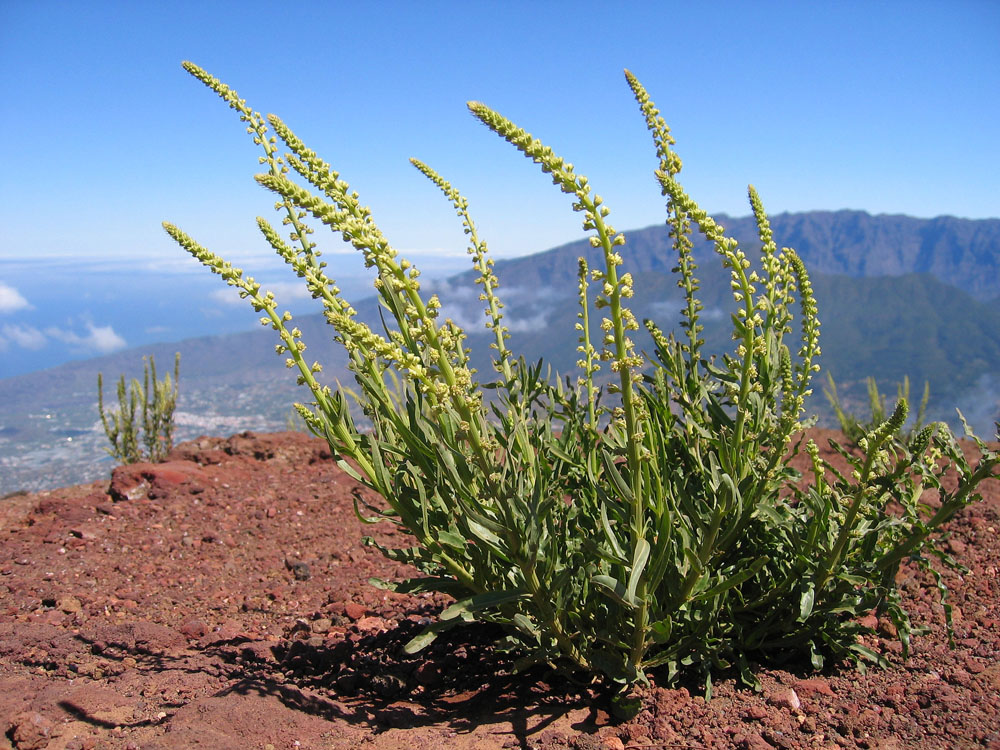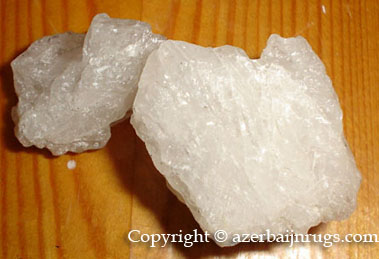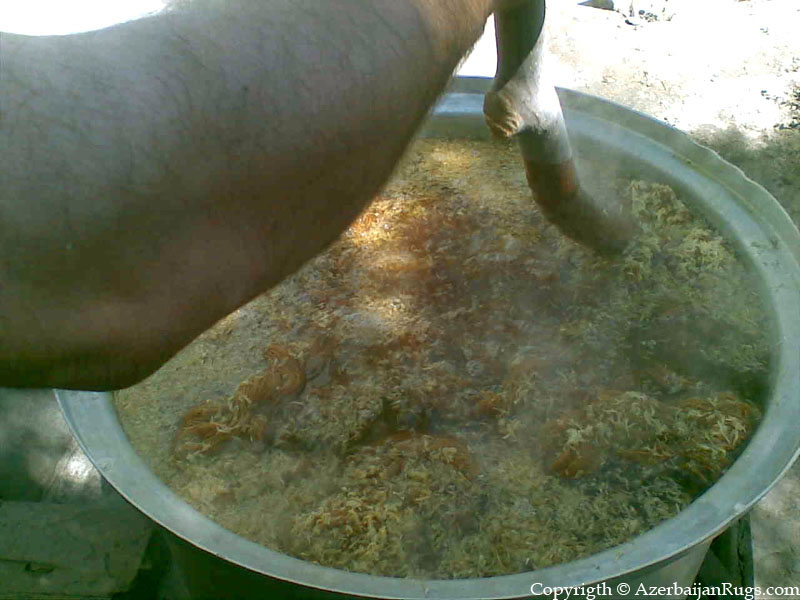|
Dyeing with Weld.
Dyer’s weed or weld produces an outstanding primary yellow on wool. This
yellow is clear and intense, the yellow that all other yellows are judged
against. The substance responsible for producing this colour is luteolin and is
present in all the green parts of the plant. Compared to other plant sources for
yellow available to the home dyer, weld is very concentrated.
Often used alongside Madder, Woad and Chamomile, together with Weld, they are
the very best natural dyes for temperate areas. Madder makes shades of red, Weld
and Chamomile yields a bright yellow, and Woad gives blues. Combined with woad,
weld makes green (the weld is done first or vice versa). They are all quite
colourfast and produce excellent quality dyes that are used amongst artists etc
who prefer to work with natural dyes.
With an alum mordant, weld makes the best yellow on wool and silk, with copper
it makes greenish yellow, with iron it makes olive. Remember to be very careful
when using any mordant other than alum, especially chromium dioxide (chrome), as
they are all toxic to some degree. Alum is very safe and will not harm you or
your fibres.
Weld can be used fresh or dried with equal success. If you are only dying a
small quantity of fibre, simply pick a few leaves from each plant, the same way
you would harvest leaf lettuce. Six to seven first-year rosettes or two
second-year blooming plants will dye a pound of wool and can be used fresh or
dried. Use dried leaves equal to ½ the weight of fabric as a measurement.
Crumble and soak in warm water for six hours before using.
Chop the plant material and simmer, for one hour to extract the pigment. Don't
boil, or it will turn brown. Keep stirring, because this dye tends to sink to
the bottom of the pot.
Strain out the leaves and add your mordant and a small quantity of chalk or
washing soda to the dye bath to make the dye bath alkaline. Then add the wet
fibre or yarn. Simmer the fibre for an hour, stirring frequently. Luteolin is
one of the few plant pigments that will settle out of solution so it is
important to stir often.
|



.jpg)

.jpg)
.jpg)
.jpg)
.jpg)
.jpg)